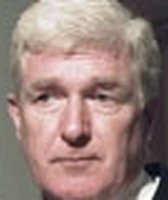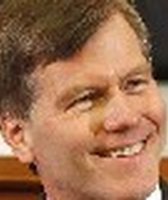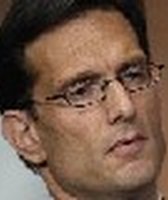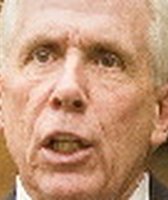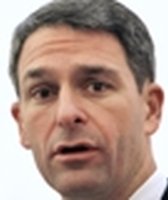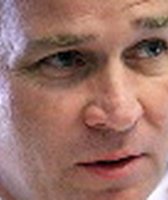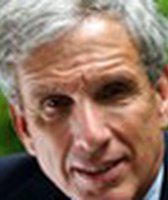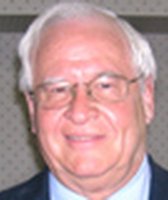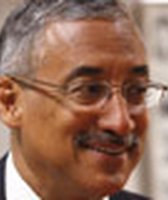Get PolitiFact in your inbox.
Rep. Jim Moran says Bush tax cuts did not improve employment and work-force participation
Democratic Congressman Jim Moran didn’t want tax cuts then, and he doesn’t want them now.
Explaining his vote against any extension of the Bush-era cuts, Moran paints the acts in 2001 and 2003 as abject failures.
"When the Bush plan was first proposed in 2001, the great cost of those tax cuts was sold to the public as a means of generating economic growth. That has proven to be false. The decade that followed the 2001 tax cuts featured the slowest average annual growth since World War II," he said in a Dec. 2 press release.
Moran continues: "Nor did lower taxes increase employment. Work-force participation fell in 2001 and has never returned to the record level set in 2000 – before the tax cuts took effect."
We were intrigued by the Congressman’s correlation between employment and the tax cuts. So we looked into the numbers.
Asked for a source, Moran’s chief of staff, Austin Durrer, sent us a New York Times business blog post by David Leonhardt, which does reinforce the congressman’s statement.
Getting to the bottom of Moran's claim required us to examine two contentions in the congressman's statement: 1) That overall U.S. employment was not increased by the Bush tax cuts; 2) That work-force participation actually fell.
Featured Fact-check
These two contentions may sound similar, but in the specialized world of economists they are defined differently and involve separate sets of statistics.
Employment
"Nor did lower taxes increase employment," Moran said.
There were 132 million Americans employed when the first round of Bush tax cuts passed in June, 2001, according to the federal Bureau of Labor Statistics. There were 130.5 employed at the end of last month. That’s a decrease of 1.5 million workers.
So technically, Moran is correct. But he omits an important consideration: After the more-sweeping second round of tax cuts took effect in June 2003, there was a significant increase of jobs that lasted until recession’s onset at the end of 2007.
There were 129.8 million Americans employed in June, 2003 and almost 138 million with jobs in December, 2007. That’s an increase of 8.2 million workers.
The recession at the end of the decade is the great equalizer that makes Moran’s statement factually accurate. But you can’t dismiss that the number of workers steadily increased for better than four years after the second Bush tax cut.
So we’d rate Moran’s statement that lower taxes did not increase employment Half True.
Work-force participation
"Work-force participation fell in 2001 and has never returned to the record level set in 2000 -- before the tax cuts took effect," Moran said.
Work-force participation is the percentage of the population 16 and older that is employed. Most economists regard it as a more meaningful measure of employment than the total number of Americans working. Here’s why:
The total employment figure does not take into account that the United States’ population is growing and additional workers enter the job market every day. The U.S. has to create about 125,000 new jobs a month just to keep its employment and unemployment rates steady.
The measure of work-force participation includes population growth.
Moran is correct in saying work-force participation peaked in 2000. The high-water mark came in April that year when 64.7 percent of the U.S. population -- 16 and older -- had jobs.
In June, 2001, when the first Bush tax cuts were approved, participation was at 63.7 percent. Last month, it was 58.2 percent -- the lowest measure since mid-1983.
The participation percentages varied slightly from passage of the second Bush tax cuts to the start of the recession. In June, 2003, participation was 62.3 percent; it was 62.7 percent in December, 2007.
Economists caution against measuring the success or failure of tax cuts by employment figures.
"The point of the tax rate cuts was to increase incentives for working, saving, and investing -- and therefore productivity and growth," said Brian Riedl, lead budget analyst for the conservative Heritage Foundation. "Labor Force Participation is just one variable. There is also job totals, work hours, investment, productivity, etc. Those variables all responded well."
Gary Burtless, a senior fellow specializing in labor market policy with the left-leaning Brookings Institution, says Moran’s point is valid. But he, too, says labor force growth is a small component in measuring the effectiveness of tax cuts.
"Tax changes can affect participation rates, though their impact has often been greatly exaggerated, especially by folks self-identifying as supply siders," he said.
So it’s fair to argue that the merits of tax cuts should not be reduced to employment figures. But Moran is accurate when he says work-force participation fell after 2000 and the tax cuts did not restore them to previous highs. We rate this part of his statement True.
Summary
Moran says the Bush tax cuts failed to boost jobs. He cites two measurements.
As he notes, total employment didn’t go up over the decade. But he neglects to mention numbers were on the rise before the advent of the worst economic downturn in 80 years. He’s half right here.
He’s correct in saying work-force participation fell since a record in 2000.
When you put both parts of his statement together, we rate it Mostly True.
Our Sources
Jim Moran, Statement on Extension of Bush Tax Cuts, Dec. 2, 2010
The New York Times, "Were the Bush Tax Cuts Good for Growth?," Nov. 18, 2010
Email interview with Austin J. Durrer, Chief of Staff for Jim Moran, Dec. 8, 2010
Bureau of Labor and Statistics, various statistics, accessed Dec. 8, 2010
Email interview with Brian Riedl, lead budget analyst, Heritage Foundation
Email interview with James Sherk, senior policy analyst in labor economics, Heritage Foundation
Email interview with Gary Burtless, senior fellow, Brookings Institution
Interview with Stacey Standish, assistant press officer, Bureau of Labor Statistics
Browse the Truth-O-Meter
More by Wes Hester
Rep. Jim Moran says Bush tax cuts did not improve employment and work-force participation
Support independent fact-checking.
Become a member!
In a world of wild talk and fake news, help us stand up for the facts.

